Astronomy is a field of science that has been in existence since the early days of civilization, following the advancements in trade, agriculture, and earth sciences. Initially, astronomers were known as stargazers as their focus was primarily on studying stars. However, in the modern era, the objectives of astronomy have expanded significantly, aided by the advent of more precise, diverse, and powerful equipment. This article explores the various aspects of 21st-century astronomy.
What is the focus of astronomy?
In simple terms, astronomy is the field of science that explores celestial bodies and planetary systems. It encompasses a wide range of objects including the Sun, the solar system, planets, comets, asteroids, galaxies, nebulae, and many other fascinating entities.
Astronomy is traditionally categorized into various branches:
- Astrometry: This branch focuses on observing and documenting visible changes in the position of celestial bodies, determining their coordinates, and compiling reference books based on the collected data.
- Celestial Mechanics: This field studies the relationship between the motion of celestial bodies and gravitational forces, as well as the shape and mass of these objects.
- Astrophysics: This branch delves into the structure, composition, and properties of celestial bodies, shedding light on their inner workings and physical characteristics.
- Cosmology: The study of the Universe itself, this branch investigates its structure and development, exploring fundamental questions about its existence and evolution.
During the 20th century, a fresh field of study called archaeoastronomy emerged, focusing on the analysis of rock paintings, archaeological sites, and human perceptions of the universe’s organization. One notable example is Stonehenge, which is believed to have been utilized for observing the celestial heavens.

The Galactic System
Ancient Babylonians were the first to compile astronomical tables in the second millennium BC. They meticulously recorded the movements of celestial bodies such as the moon, sun, planets, and stars. Throughout history, astronomers have continued this tradition, utilizing various instruments to aid their observations.
In the 18th century, it was theorized that the solar system was merely a component of a larger entity. English astronomer W. Herschel later confirmed this hypothesis, identifying all visible stars from Earth as part of an extensive stellar system. This system, known as the Milky Way, is fixed in the sky like a celestial anchor.
Advancements in the 20th century revealed the Milky Way to be a spiral galaxy, resembling the shape of a lentil. Hosting an estimated 200-400 billion stars, including our own Sun, the Milky Way encompasses an immense expanse. The solar system itself resides on the outskirts of this galactic structure.

Figure 2. The Milky Way galaxy.
Optical Instruments
A device used for observing the celestial objects is known as a telescope. The first telescope, invented by Galileo Galilei in 1609, took the form of a cylindrical tube. Over time, these telescopes underwent advancements and improvements. The lens was eventually replaced with a massive mirror. The largest modern telescope boasts a mirror with a diameter of 10.4 meters (the Great Canary Telescope).
During the 20th century, radio telescopes were introduced, capable of detecting radio waves from outer space. These telescopes consist of enormous antenna dishes equipped with state-of-the-art technology.
In 1990, the Hubble Space Telescope embarked on its mission. Experts predict that its operations will continue until the conclusion of the year 2021.
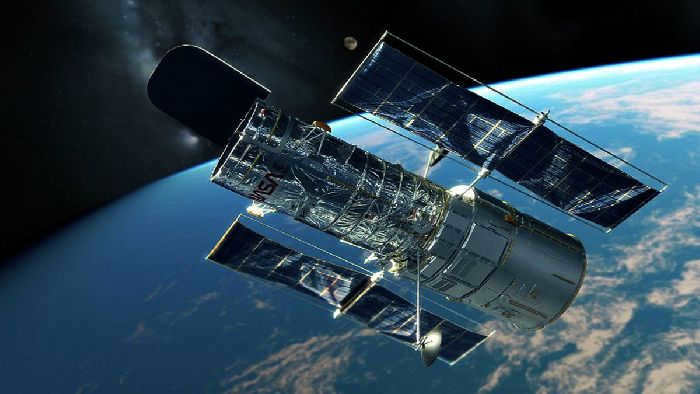
Similar articles:
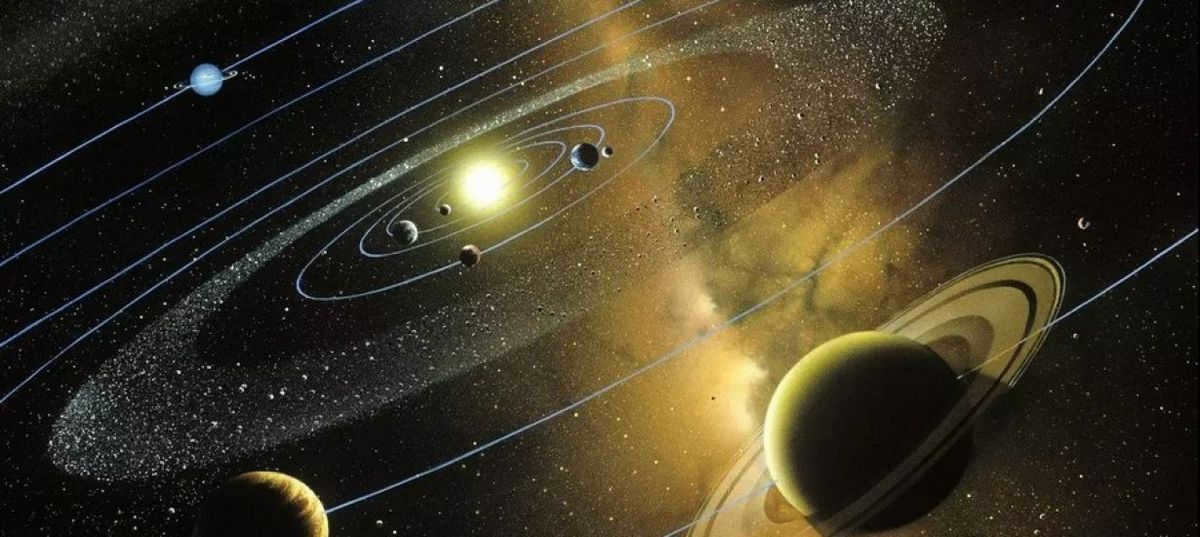
Scientists throughout different eras have constantly revised their depictions of the solar system. As early as ancient times, individuals have pondered the origins and movements of celestial bodies. The initial astronomers attempted to track the motion of these celestial bodies and identify any patterns. They constructed astrological tables and comprehensive calendars. With the invention of the telescope, people gained the ability to observe and comprehend the cosmos to a greater extent than ever before. However, even this groundbreaking device failed to provide answers to all inquiries. Even with today’s advanced optics, there remain many enigmas of the universe that have yet to be unraveled.
Let’s explore how scientists’ conceptions of the solar system evolved during a time when they lacked the technological advancements available to us today.
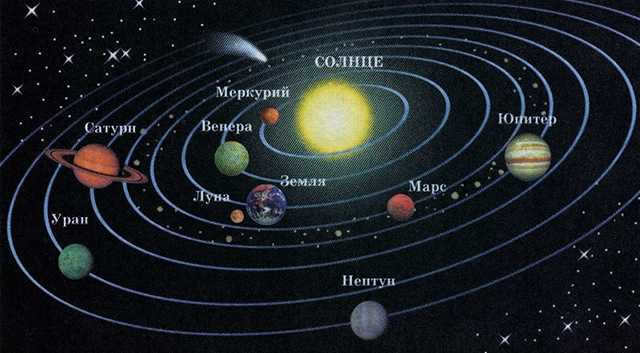
The heliocentric model
In ancient times, any unexplained phenomena were often attributed to supernatural forces or gods. These forces, known by different names across different cultures, were believed to have created the Earth, humans, animals, and maintained order in the world. Before the advent of modern astronomy, the ancient Greeks did not have a precise understanding of the solar system. They believed that the Earth was not just a stationary object, but the center of the universe around which everything else revolved.
The geocentric model, known as the idea that the Earth is at the center of the universe, was initially conceived by ancient Greek astronomers. They postulated that not only the Sun, Moon, and the five known planets including Saturn, but also the entire cosmic space, orbit around our planet. According to this model, the Earth acts as a stationary axis, around which the celestial bodies revolve. Claudius Ptolemy, a renowned astronomer, introduced this concept in his influential work, the Almagest.
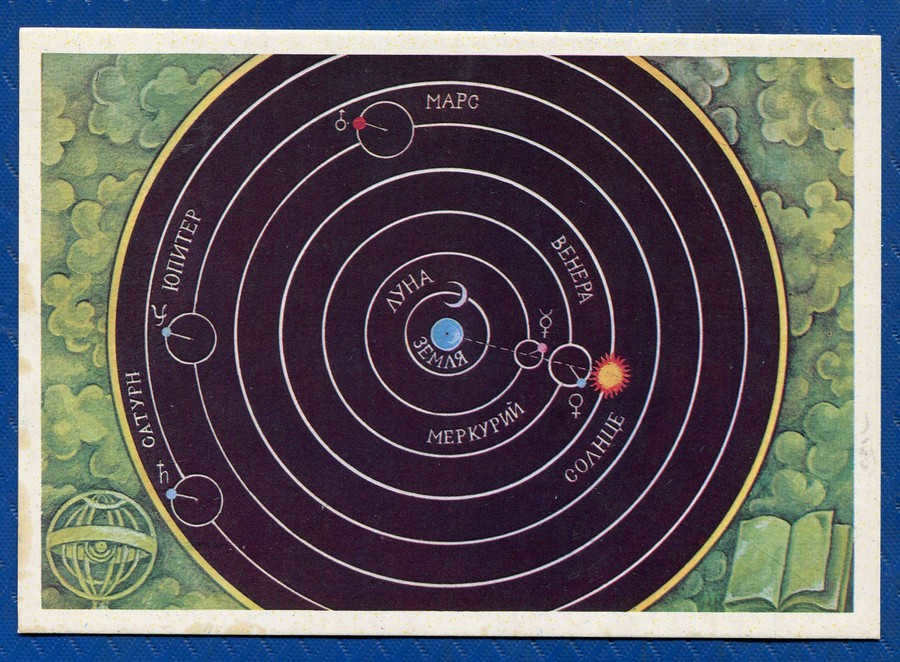
The concept of the Earth being a sphere was first proposed by Pythagoras. Later, his followers speculated that the Sun’s position in the sky was directly correlated with the length of daylight hours. Aristotle, another renowned philosopher, further expanded on this idea by proposing the existence of solid celestial bodies that encapsulated all the celestial objects orbiting the Earth. This geocentric model persisted for many centuries.
During the Middle Ages, investigating the universe and its enigmas proved to be quite challenging due to the significant influence exerted by the church over all aspects of human endeavor, including scientific pursuits. Consequently, the prevailing notion regarding the arrangement of the solar system was the geocentric model, which was further augmented by Aristotle’s conception of impenetrable celestial spheres.
Nevertheless, the progress of astronomy did not come to a halt, and it persisted in its exploration of the cosmos. In the period of the Renaissance, a radical new hypothesis emerged, challenging the prevailing belief. It posited that the Earth was not the focal point of the universe, but rather one of many planets revolving around the Sun. Interestingly, this concept was not entirely novel, as it had been previously debated by ancient astronomers such as Aristarchus and Seleucus. However, during their time, this theory was summarily rejected as inconceivable. Even the esteemed Da Vinci attempted to demonstrate that the Earth was simply a mobile entity like countless others, yet his proposition failed to gain acceptance as well.
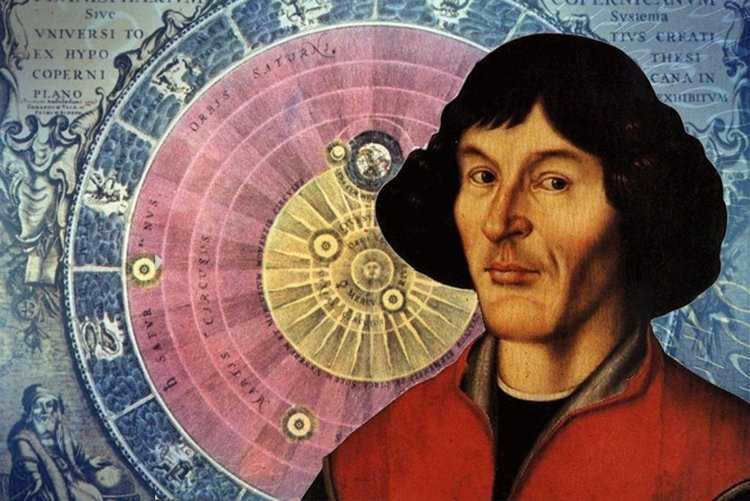
Nicolaus Copernicus was the individual who consolidated and expanded upon the heliocentric model. In his comprehensive book, he presented calculations regarding the distances from the star to all known planets of the solar system at that time, as well as their respective periods of rotation around it.
However, Copernicus’ model still had its flaws. He based his theory on the Aristotle’s concept of solid celestial spheres, which were believed to cause the planets to orbit around the Sun. Additionally, the astronomer considered the central point of Earth’s orbit, rather than the star itself, as the center of our system.
The contemporary heliocentric model
Unsurprisingly, Copernicus’ theory was met with resistance from the Church and numerous other scientists. The Inquisition persecuted and put on trial those who adhered to his teachings. Giordano Bruno, one of the most renowned advocates of heliocentrism, paid the ultimate price for his beliefs. He boldly proclaimed that Aristotle’s celestial spheres were nonexistent and that the Sun was merely one of the countless stars scattered across the heavens.
With the invention of the initial refractor telescope by Galileo, the heliocentric model garnered even further support. Not only was the scientist able to ascertain the movement of the planets around the Sun, but he also observed Jupiter’s largest satellites, identified lunar phases, and made countless other discoveries. The accumulation of all these findings by Galileo provided undeniable evidence that our Earth is not at the core of our solar system, and certainly not at the core of the entire universe.
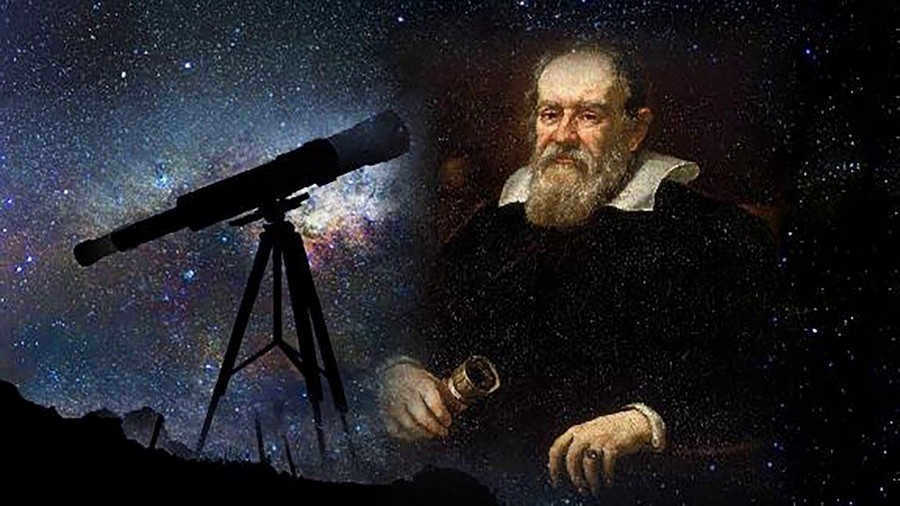
In the subsequent years, numerous scientists embarked on the development of the heliocentric model, among them Johannes Kepler, who meticulously calculated the duration and velocity of each planet’s orbit around the sun within the solar system.
Nevertheless, for an extended period of time, the church staunchly opposed and impeded the advancement of this theory, as it challenged the notion of Earth being the center of the universe. This notion posed a threat to the belief in supernatural forces, even within the church itself. Consequently, geocentrism remained the prevailing model until the early 18th century. It was only in the latter half of the 17th century that Isaac Newton formulated the laws of universal gravitation, which ultimately caused geocentrism to gradually crumble.
Uncommon in Russia, the occupation of an astronomer is a career that is pursued out of passion. If an individual decides to dedicate themselves to the exploration of celestial entities, they will need to undergo extensive education and training. Financial rewards are not typically immediate either. Prior to embarking on a scientific journey, it is advisable to learn about the duties of astronomers, the potential salary, and other unique aspects of this profession.

What does it take to become an astronomer?
An astronomer is a professional who dedicates their career to studying the structure of celestial bodies and the phenomena occurring in the universe. Astronomers can be categorized into two main groups: observers and theorists. Observers focus on collecting data, conducting experiments, and developing observation methods, while theorists work on formulating hypotheses and analyzing the results obtained from research.
Roles and Duties
There is a common misconception that astronomers spend their entire day peering through telescopes. However, the tasks and responsibilities of scientific researchers extend far beyond that. The majority of their working day is actually spent in front of a computer screen. These experts engage in calculations to address a wide range of issues, such as exploring the vastness of the universe, guiding rockets, and launching satellites.
Scientists meticulously observe the movements of celestial bodies, create detailed star maps, and delve into the realms of cosmology and astronomy theory. Additionally, they are responsible for preparing comprehensive reports and delivering presentations at both national and international conferences.
Employment Opportunities and Salary in the Field of Astronomy
Considering the unique nature of the profession, job openings in the field of astronomy are limited. Individuals with a background in astronomy can find employment in observatories, space research institutes, and universities where they can also teach. Some professionals may also work as planetarium guides and find opportunities in related industries such as astronomogeodesy and IT. Moreover, there are other astronomy-related professions, including space psychologists and engineers who specialize in designing spacesuits.
The salary of an astronomer is largely determined by their level of education. Typically, individuals who choose this challenging yet fascinating career path complete their undergraduate studies and then pursue graduate education. Many astronomers go on to earn master’s and doctoral degrees, and they often publish scientific papers as part of their research.
As their credentials expand, their income also grows. For young professionals, it varies between 20,000-25,000 rubles, while seasoned experts can earn up to 100,000 rubles or even more. Since the majority of employers are governmental organizations, astronomers receive their income from the state budget. The most skilled scientists do not rely solely on their salary, but also receive grants specifically allocated for their research projects.
Advantages and disadvantages of the profession
Astronomy is a field that offers numerous benefits:
- It provides an intriguing opportunity to explore the unknown and make groundbreaking discoveries;
- There are chances to participate in conferences, including international ones;
- The profession offers a decent salary;
- There are ample opportunities for professional growth and career advancement;
- There is a possibility of gaining recognition in the scientific community and becoming a nationally renowned figure.
Despite its advantages, there are a few drawbacks:
- Extensive studying is required before finding a job;
- Ongoing professional development is necessary to succeed;
- Researchers often have little time for rest when working on new discoveries.
However, determined individuals are not deterred by the drawbacks of the profession, and there is always competition in specialized universities.
What is the path to becoming an astronomer?
Becoming an expert in astronomy is no simple task. It requires specialized knowledge, skills, and unique personal qualities for successful work.
Great breakthroughs are not achieved immediately, so astronomers rely heavily on qualities such as perseverance, patience, and diligence. They must possess a sharp analytical mind and a deep passion for studying celestial phenomena. Additionally, a strong understanding of physics and mathematics is crucial to avoid errors in calculations.
Given that astronomers often write scientific papers and deliver presentations, excellent communication skills and a willingness to travel are essential. Proficiency in computer skills is also important, as special programs are utilized for data processing.
Furthermore, there are certain health restrictions. Individuals with vision or hearing impairments, as well as those with musculoskeletal disorders, may find this line of work unsuitable.
What are the educational requirements and where can I submit an application?
To pursue a career as an astronomer, it is essential to have a higher education. Many aspiring astronomers often enroll in preparatory courses to gain a comprehensive understanding of the field.
Which exams are required for admission?
Prospective astronomers are required to pass exams in mathematics, physics, and Russian language. Throughout their studies, they will also need to focus on subjects such as statistics, mechanics, and advanced mathematics.
What is the duration of study after completing 9th and 11th grade?
In order to pursue a career in space exploration, it is necessary to complete 11 grades of schooling. The length of study at this level typically ranges from 4 to 6 years. Upon completion of high school, the most talented graduates may have the opportunity to continue their education at the university level and pursue a postgraduate degree. The duration of study for a full-time postgraduate program is typically 3 years, while part-time programs can take up to 4 years.
Can distance learning be achieved?
It is not possible to attain a comprehensive education in astronomy solely through online means. However, for individuals who wish to take the initial steps in this field, there are both paid and free distance courses available. Additionally, there are specialized programs designed for educators seeking to undergo retraining.
There are opportunities to pursue the study of astronomy both as an extracurricular activity and as a secondary specialization. It is worth noting that this field is not widely popular, which is why many aspiring astronomers choose to study it within the departments of physics, mathematics, and mechanical engineering. Here are a few pathways for aspiring space explorers.
Higher education institutions and colleges
Residents of Moscow have a variety of options when it comes to pursuing higher education. Some of the notable institutions include:
- Lomonosov Moscow State University. Individuals interested in studying Astronomy can apply to the Faculty of Physics. The program duration is 6 years. There are only 20 available spots for government-funded students, but it is also possible to pursue the program on a self-funded basis at a cost of 355,500 rubles per year. Another option is the Faculty of Space Studies, which has a similar cost and program duration.
- PFUR offers a program in "Modern Cosmology and Problems of the Universe". The program duration is 4 years, and the cost of tuition per year is 205,000 rubles.
- MIPT offers a program called “Physics and Mechanics of Space and Natural Systems” that provides education in the field. The minimum duration of the program is 4 years and it costs 250,000 rubles per year.
- NATIONAL RESEARCH UNIVERSITY HIGHER SCHOOL OF ECONOMICS offers quality education in Physics. The program takes 4 years to complete and costs 320,000 rubles per year.
- NITU MISIS provides training in the specialty of “Condensed State Physics” for a duration of 4 years. The cost of the program is 195,000 rubles per year.
In St. Petersburg, there are several universities that are open for applicants.
- St. Petersburg State University is renowned as one of the world’s premier educational institutions for astronomers. Students pursuing a degree in “Astronomy” can expect to study for a duration of 6 years. The department offers 20 fully-funded positions, while the tuition fees for students entering on a contractual basis amount to 224,600 rubles per year.
- At the Russian State Pedagogical University named after Herzen, aspiring individuals have the opportunity to specialize in “Physics”. The program entails a 4-year study duration with a tuition fee of 150,700 rubles per year.
- SPbNIU ITMO extends an invitation to prospective students interested in pursuing a degree in “Technical Physics”. The program entails a 4-year study duration with a tuition fee of 273,000 rubles per year.
- St. Petersburg Technical University offers a comprehensive 4-year program in physics, with a tuition fee of 153,000 rubles per year.
Higher education institutions and vocational schools
Due to the unique nature of the astronomy profession, colleges and technical schools do not currently offer training programs for aspiring astronomers. There is currently no specialized literature available for this type of training.
Astronomy courses and training programs
For individuals interested in studying astronomy, there are several short-term courses available in Moscow. These courses include:
- “Popular Astronomy” courses for adults at the Moscow Planetarium. The program costs 5,600 rubles and consists of 7 theoretical and practical classes.
- Lomonosov Moscow State University offers a distance learning program called “Fundamentals of Astronomy”. The program costs 7,500 rubles and has a duration of 12 weeks.
- The Moscow Cultural and Educational Center is organizing a series of lectures on general astronomy. Basic knowledge of mathematics and physics at the secondary school level is sufficient. Each lecture costs 500 rubles, but if you purchase a subscription for 5-10 lectures, you can save up to 30%. Students can enjoy a 50% discount, while schoolchildren can avail a 70% discount.
- The Educational Center “My University” is offering an online course titled “Modern Approaches to the Study of Astronomy”. The course duration is 6 weeks, and it is available at a discounted price of 2,300 rubles.
- The Capital Training Center has developed a distance learning program for astronomy teachers. The course, which lasts for 108 hours, costs 1,840 rubles.
Institutions in the Northern Capital have the following programs on offer:
- The St. Petersburg State University of Pedagogical Excellence offers professional development programs for teachers specializing in astronomy and physics. Upon completion of the 72-hour training, participants receive a certification. The cost of the program is 750 rubles.
- The Astromystic School of Astrology provides distance learning courses that span over 8 months. The monthly fee for these courses is 2,990 rubles.
- The St. Petersburg branch of the Moscow Cultural and Educational Center holds a lecture series titled “Astronomical Etudes” by K.L. Maslennikov. Each lecture is priced at 400 rubles.
- The Lectorium Educational Online Platform regularly offers a complimentary introductory course on astronomy. This course is suitable for students, schoolchildren, teachers, and anyone with an interest in the stars.
- On the educational platform “Infowork,” you can enroll in the course entitled “Teaching Astronomy in High School” that focuses on the specific aspects of teaching this subject. The duration of the course is one month, and the fee for enrollment is 2,400 rubles.
The decision to pursue a career as an astronomer is rarely a spontaneous one. Typically, individuals who choose this path have a deep passion for space and are willing to dedicate their entire lives to their chosen profession. As a result, many of them go on to achieve great success, with rewards that come sooner rather than later.
Humanity has been intrigued by what lies beyond the confines of Earth since ancient times. To observe stars, planets, and other celestial phenomena, astronomers have established numerous astronomical observatories.
What is the definition of an observatory?
An observatory is a structure specifically designed for the purpose of observing celestial objects and phenomena in the universe. It serves as a research facility for scientists in the field of astronomy.
Various kinds of observatories:
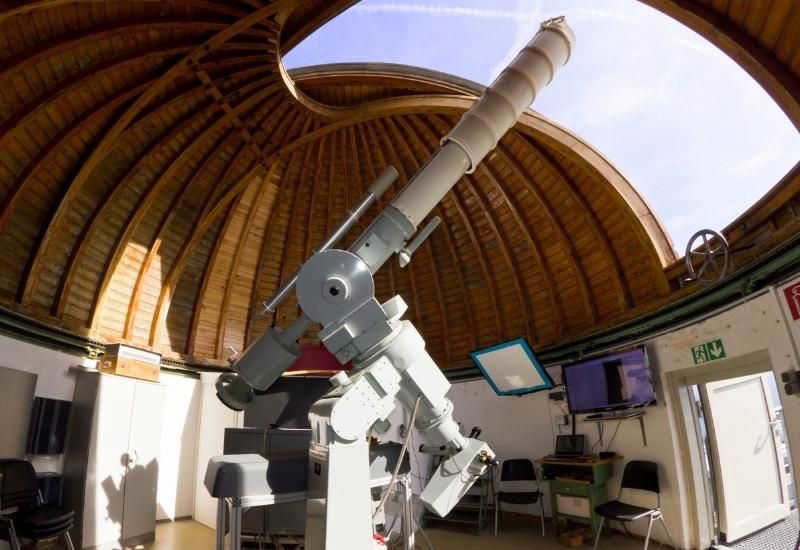
- Observatories situated on the Earth’s surface are utilized to study the cosmos using the visible part of the electromagnetic spectrum. These structures, equipped with telescopes, are housed within domed buildings.
- Radio astronomy observatories are equipped with radio telescopes, enabling observations in the radio frequency range. These facilities are strategically located away from urban areas to minimize interference from devices such as radios, televisions, radar systems, and other electromagnetic radiation-emitting devices.
- Space observatories consist of equipment that is launched into space, typically in orbit around the Earth. These instruments allow for the observation of celestial bodies that are not visible from ground-based observatories.
- Astronomical observatories in space not only house telescopes, but also house a variety of equipment for measurements and data analysis. This enables astronomers to gather more information about celestial objects, discover previously unidentified celestial bodies, and forecast various events such as solar eclipses.
History of the earliest observatories
Observatories underwent transformations in their appearance and equipment as civilizations advanced over time. The initial observations of the stars and planets took place in ancient eras, and even today, space continues to captivate humanity’s interest.
Ancient civilizations
In ancient times, people did not possess the technological means to track celestial changes using sophisticated equipment, so they simply relied on their naked eye observations.
The locations for their observations included:
- open areas of land;
- natural hills;
- man-made mounds and pyramids.
In close proximity to these observation sites, they constructed what are now known as landmarks, such as towers, which enabled them to monitor the movements of celestial bodies and predict various astronomical events.

Afterwards, more advanced tools emerged. For instance, a flat bar with a movable sight and a plate containing a circular opening were utilized.
Medieval Era
During the late antiquity and early medieval period, astronomical studies in the Mediterranean region came to a halt. Although people had access to Ptolemy’s works, only a few were knowledgeable enough to employ his methods.
However, astronomy thrived in the East and Asia, where the first observatories with domes were built. Astronomers used these facilities to study and refine Ptolemy’s findings.
The most prominent observatory during the Middle Ages was located in Samarkand, which is presently part of Uzbekistan. Ulukbek, the grandson of the renowned conqueror Tamerlane, conducted astonishing observations at this site.

The Renaissance Period
In the period known as the Renaissance, the field of astronomy had already achieved significant advancements in Islamic countries, while in Europe, efforts were just starting to be made towards further development. Although the physical structures of observatories remained the same, with their iconic domed designs, progress was being made in the study of celestial phenomena.
Copernicus
Nicolaus Copernicus was convinced that Ptolemy’s approach necessitated overly intricate computations in order to account for the celestial luminaries’ motion. Nevertheless, rather than discarding this method entirely, he suggested a simple modification by relocating the Sun to the center of the system, which significantly streamlined experts’ task.
Tycho Brahe
Tycho Brahe was a supporter of Copernicus and led the efforts to construct an observatory in Copenhagen. This facility was fully equipped with advanced instruments, state-of-the-art laboratories, well-stocked workshops, a comprehensive library, and even living quarters complete with a functioning kitchen.

Next, he built a second observatory, equipped with upgraded instruments for observing and the most precise scales. These improvements greatly enhanced the accuracy of measurements.
Kepler
Kepler discovered that planets orbit the Sun in ellipses, not circles, which revolutionized astronomy. He also played a role in establishing observatories, garnering support from authorities and improving the instruments used.
The Birth of Telescopes
The telescope was brought into existence by the renowned scientist Galileo Galilei in 1609. As a result, the existing observatories became inadequate and had to undergo modifications. Moving domes were constructed, and openings were created in them to facilitate observations.
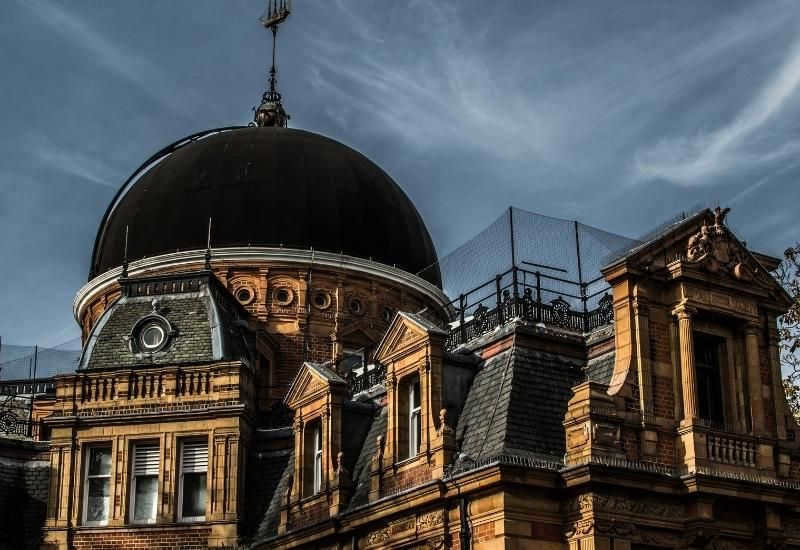
Paris and Greenwich were the first observatories to be updated. The latter was constructed in the late 17th century and is still recognized as one of the largest in the world.
In 1692, a similar observatory was established near the city of Arkhangelsk in the Russian Federation. Archbishop Athanasius of Kholmogorsk played a key role in its establishment.
The early refractor telescopes
Early observatories were outfitted with large refractor telescopes. The initial design, pioneered by G. Galileo, featured a lens-objective that produced the desired image, and a negative lens-ocular that allowed astronomers to view celestial bodies. However, the quality of the image was not optimal and the field of view was limited.
Later on, scientists Kepler and Descartes developed a different type of telescope that produced an inverted image but offered a larger field of view. This new device served as the foundation for the production of subsequent observational instruments.
What is the structure of a contemporary observatory?
Contemporary terrestrial observatories are constructed as cylindrical or polyhedral towers that house domes containing optical or radio telescopes. These facilities are typically situated in remote locations, away from urban areas, in order to minimize any potential disruptions to the observation equipment.
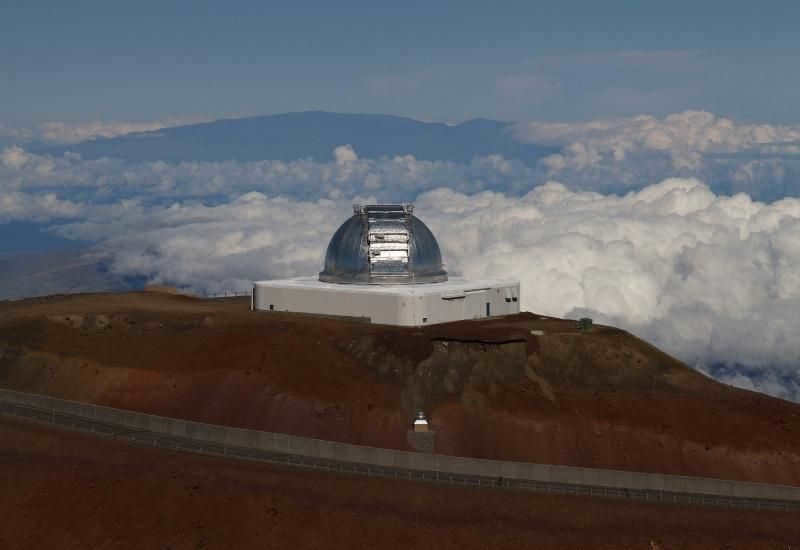
Mountainous areas are particularly well-suited for astronomical research due to the minimal atmospheric turbulence. Additionally, it is crucial to have clear skies with little to no cloud cover at the observation site, as this can hinder astronomical observations.
There are observatories in many cities in our country, including both large standalone facilities and smaller ones located at universities, institutes, and planetariums.
A List of Active Observatories in Moscow
The observatories in the capital city:
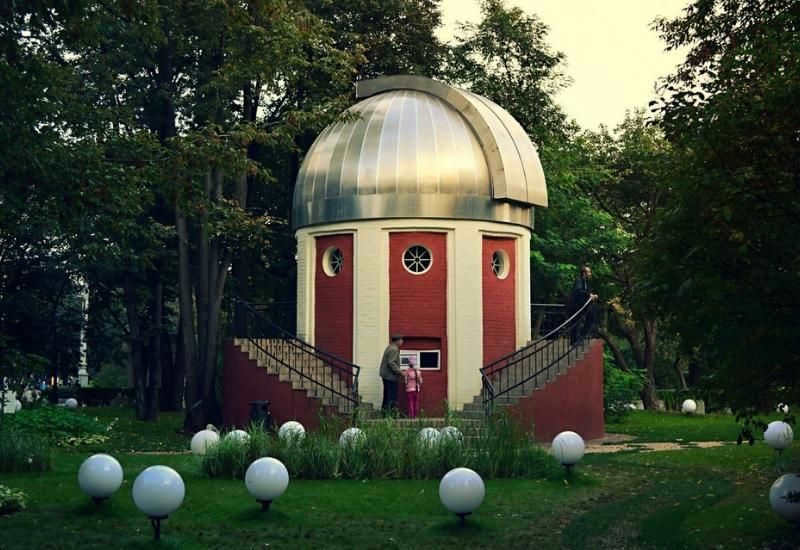
- The Moscow Planetarium is located at 5 Sadovaya-Kudrinskaya Street.
- You can find the Moscow State University Observatory at 5 Novovagankovsky Lane.
- The Moscow Palace of Pioneers is situated on Kosygina Street, 17, building 1.
- Visit the CDRA Planetarium at Suvorovskaya Square, 2.
- Discover the Observatory in Gorky Park at 9 Krymsky Val Street.
In the vicinity of Moscow, specifically in the village of Kuzminskoye, you can find a privately owned observatory known as “Ka-Dar”.
Here is a compilation of observatories that are currently operational in St. Petersburg:
The following are some of the observatories located in St. Petersburg:
- Pulkovo Observatory: Situated at Pulkovskoe highway, 65/1.
- St. Petersburg Planetarium: Located at Alexandrovsky Park, 4.
- Narodnaya Observatory: Found at 24, Prilukskaya str.
- Narvskaya Narvskaya Observatory: Situated at 34, Marshala Govorova Street.
Furthermore, in the Priozersky district, specifically in the village of Svetloye, there exists a radio astronomical observatory known as “Svetloye”.
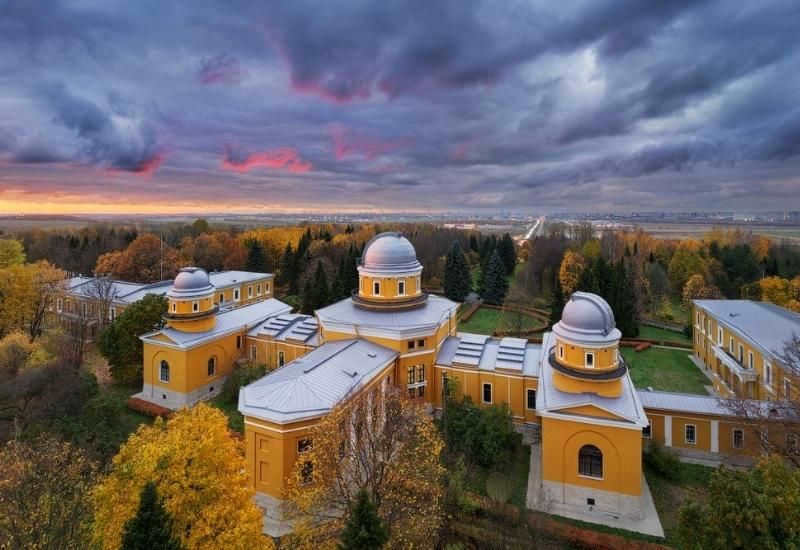
Observatories located in different cities
Some other well-known observatories in Russia:
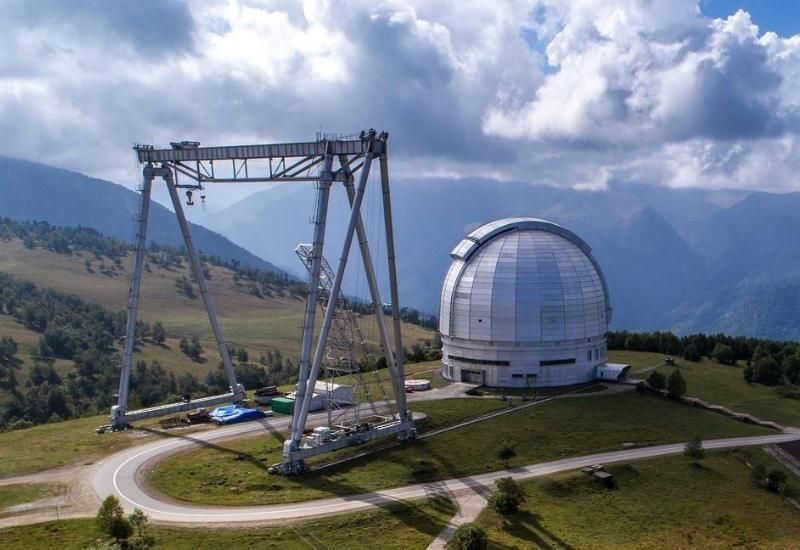
- Novosibirsk has a large planetarium located at 1/1, Klyuch-Kamyshenskoye Plateau str.
- The Kaluga Planetarium can be found at Akademika Koroleva St., 2.
- If you’re interested in visiting an observatory, check out the Asterion Observatory at 10A Universitetskaya str.
- The Radio Astronomical Observatory known as “Badary” is located in the Republic of Buryatia, Tunka district.
- For those in the Oktyabrsky settlement, be sure to visit the V. P. Engelhardt Astronomical Observatory at AOE St., 7, bldg. 2.
- The Arkhyz Astrophysical Observatory can be found in the Karachay-Cherkess Republic, Zelenchuksky district, Nizhny Arkhyz settlement.
- Located at 41, Nauchnaya str., the Crimean Astrophysical Observatory is a must-visit for astronomy enthusiasts.
- Lastly, the Vladimir Planetarium is located at 66A Bolshaya Moskovskaya Street.
In the era of digital technology, it is now possible to observe the stars from the comfort of your own home through online platforms. One such platform is the “Geocam” website.
Renowned Observatories from Around the World
There are over 500 observatories worldwide, with the majority of them situated in the northern hemisphere.
Some of the largest and most well-known observatories in different countries include:

- The “Sky Eye” in China is a remarkable astronomical facility consisting of a massive spherical radio telescope with a diameter of 500 meters. This impressive construction has the capability to detect even the faintest radio waves emitted by celestial bodies.
- Located in Chile, the “Paranal Observatory” is a sophisticated system comprising multiple antennas of varying sizes that are interconnected to form an interferometer. Situated at a high altitude with minimal cloud cover and a thin atmosphere, this observatory is ideal for conducting precise observations.
- “Arecibo (Puerto Rico). A research facility featuring an immense radio telescope boasting a dish diameter of nearly 305 meters. Local scientists, as well as astronomers from the United States, utilize this observatory to conduct groundbreaking studies.”
- “Mauna Kea” (USA). Situated in Hawaii atop the majestic Mauna Kea mountain, this observatory stands out for its impressive array of cutting-edge instruments designed for a wide range of observations. Its unparalleled collection of equipment sets it apart as a global leader in astronomical research.
- “ORM” (Spain). Perched at an elevation of almost 2.4 thousand meters, this observatory boasts the planet’s largest aperture telescope, making it a prime destination for astronomers and scientists alike.





